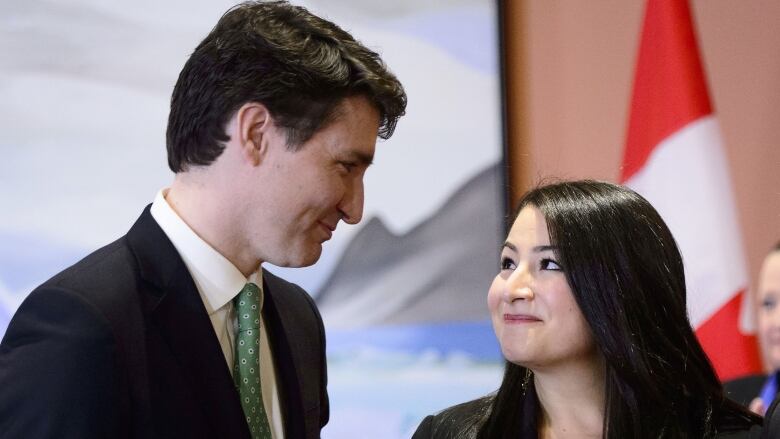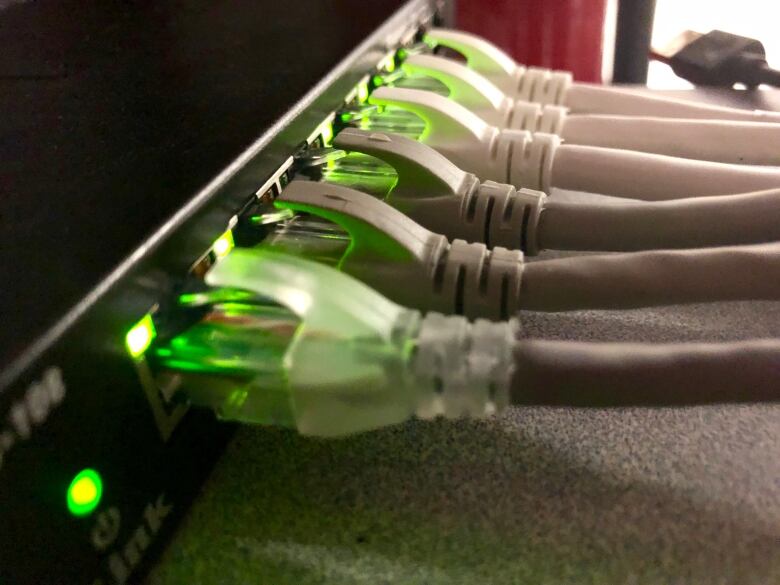If a crisis like COVID-19 hasn't pushed government to take action to improve broadband access, what can?
Lack of affordable, quality internet across country keeping families from meeting basic needs like education

This column is an opinion by Erin Knight, a digital rights campaigner at OpenMedia, which works to keep the internet open, affordable, and surveillance-free.For more information aboutCBC's Opinion section, please see theFAQ.
When COVID-19 struck, the internet was the seatbelt that stopped us from catapulting through the windshield. By mid-March, workplaces had gone remote, schools moved to online learning, and videoconferencing became the best, safest way to stay in touch.
But one in 10 Canadian households still have no internet at home, relying on mobile, work, school and libraries for basic connectivity. Which raises the question: who's being left out of the new online normal?
Unsurprisingly, it's disproportionately people living in rural and remote areas, low income families, and Indigenous people.
And even for those who have a connection, it's often slow. Only 41 per cent of connected rural households are able to access the minimum speed targets (50 Mbps download/10 Mbps upload) outlined by Canada's Connectivity Strategy. For First Nations reserves, it's closer to 31 per cent.

This widespread disconnection is at the heart of Canada's COVID-19 crisis. The lack of affordable, quality internet across the country has prevented families from meeting many basic needs particularly education.
I've been speaking with dozens of people around my hometown of Gilbert Plains, Man. about 350 kilometres northwest of Winnipeg to hear firsthand what people have experienced. Local parents have told me their children have had no way to complete their online classwork and participate in Zoom meetings with their teachers, all because of poor internet.
Cases like this worry many rural teachers, some of whom told me they have seen noticeable gaps already developing between students with internet and those without. A vice-principal shared that many families at his school don't have home internet connections at all. With Zoom and Teams meetings out of the equation, educators have struggled to reach their disconnected students, with some having no choice but to deliver physical assignment packages to kids some living in the country a whopping 60 kilometres away from town and hope for the best.
The situation is especially dire for many Indigenous students. One rural principal from my community told me their school lost all contact with a billeted Indigenous student as soon as the pandemic struck; he had gone home to his reserve where there is no internet connection at all, and no-one at the school had been able to reach him for months.
These students already face an uphill battle to receive an education. According to data from the 2016 census, only 56 per cent of Inuit aged 25 to 64, and 70 per cent of First Nations people in the same age bracket, have a high school diploma or further education. For the total population in Canada, that figure is around 89 per cent.

A large majority of teachers polled in a recent Canadian Federation of Teachers' report were concerned that the move to online schooling was worsening educational inequality during the pandemic, with 74 per cent seeing negative outcomes for Indigenous students and nearly 88.8 per cent seeing negative outcomes for students living in poverty.
In sum, lack of connectivity during COVID-19 has caused a marked disruption to the education of millions of kids throughout Canada, and the opportunity to contain the damage is quickly passing us by. While some provinces anticipate a return to in-person classes this fall, a surge in cases or the anticipated 2nd wave could abruptly lead to schools closing and classes moving back online.
Given the dire state of access and our intense reliance on the internet throughout this pandemic, fixing the problems must already be a government priority right?
Well, sort of.
In early June, Rural Economic Development Minister Maryam Monsef stated that applications for the government's $1.7 billion Universal Broadband Fund would finally open "in the coming days." Nearly three months later, it has yet to open for applications. That plan was first promised well before the pandemic in March 2019.
The only new concession from Minister Monsef since COVID-19 hit is to say she's considering making the internet an essential service.
To the millions of rural and low-income people in Canada without broadband or even basic internet access, her words should have been a lifeline. But more than 70 days have passed, and we haven't heard anything since. No applications, no funding, and no new essential services.
What's going on here? The government's COVID-19 response has been filled with rapid announcements, investments, and policy shifts the centre of which should have been the backbone of our social and economic survival: the internet. The window for "rapid response" on this, however, has come and gone.
To the millions of rural and low-income households in Canada that needed affordable, good quality broadband yesterday, Minister Monsef may as well be the "Politician Who Cried Internet." These folks have been burned by decades of the same half-baked policies. What exactly is the government going to do differently this time around?
If a national crisis can't convince the government to kickstart action to meet its promises on national broadband, it's unclear what can.
Every week that passes without shovels in the ground to get more people online, and without policies to improve the speed and lower the costs of broadband for all Canadians, the government is allowing the pandemic to compound the social and economic disadvantages that already divide this country. We can't wait any longer.
- This column is part ofCBC's Opinion section. For more information about this section, please read ourFAQ.













_(720p).jpg)


 OFFICIAL HD MUSIC VIDEO.jpg)
.jpg)



























































































